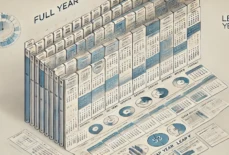Sports trading cards are as American as apple pie. Millions upon millions of Americans have collected, sold, and traded these cards for over a century in the country. During the 1990s, when the Internet started to take off, trading cards took a huge hit in the market and were practically worthless. Unless you owned something truly rare and collectible, your cards just weren’t worth much. However, over the past few years, trading cards have made a huge resurgence, and now you can find them used in all different sorts of financial situations. Here are just a few of the many ways these cards are used in finance.
They’re Considered Their Own Asset Class
With the resurgence of trading cards as actual capital, a lot of investment firms have decided to use these cards as a legitimate asset class. What does this mean? In plain English, it means that trading cards can be used as capital to receive loans, cash advances, and more, based on the likelihood that when people get around to selling these trading cards, they’re going to have the cash to pay everything back. This is a huge boon for the collectible market, as it spurs a lot of other individual people and firms to invest in trading cards. This has led to a total renaissance of trading cards over the past decade, and some estimates suggest they’re worth more now than ever before.
Online NFT Investors
People have been buying, selling, and trading NFTs (Non-Fungible Tokens) for a few years now, and the market has certainly had its fair share of valleys and peaks. The main thing about NFTs, however, is that they’re very akin to the art market in terms of value. In other words, an NFT is worth what someone is willing to pay for it. So a Bored Ape to you might be worthless, but to someone who wants to own it as art, it might be worth a million bucks. Trading card NFTs can be found all over now, and they’re creating huge financial opportunities for some. BYU NFT football cards, for instance, are quite popular, and quite lucrative. Other universities and pro teams have their own NFT cards on the blockchain too.
The Creation of Businesses
Another way that cards have been used in finance is that they’ve also been the main product, and even the main capital, behind a lot of different businesses. Trading card shops and sports memorabilia stores bank on the fact that people will come in and buy trading cards. These cards are not only sold individually based on the value of the players specifically, but you can still find stores that sell entire packs of cards. There’s a lot of nostalgia there, as opening trading card packs used to be like scratching off lotto tickets. It was something very exciting, and that excitement has returned thanks to the market resurgence.
Personal Deals
These cards are also used financially via independent deals. Not every expensive card is put up for auction or sold out of a shop. Most aren’t; most cards are sold or traded with other private collectors who see the value in the cards. There are all sorts of examples of people who have contacted private collectors to sell their cards or to trade them off for something else of value. There’s an entire subculture in America that deals with private collectors buying and selling trading cards for huge sums of money.
Collateral
When you take out a mortgage loan from the bank, the house is the actual collateral. If you fail to make your payments, the house is taken from you, and so the house is the incentive. Valuable trading cards are also used by some lenders, firms, and individuals as collateral. If a person wants any type of loan, they may be able to get it by using their card collection as collateral. This is just another unique way that trading cards show up in finance.
In Conclusion
The point here is that trading cards, whether physical or digital NFTs, have a lot of financial potential. If you have something valuable, hold onto it and leverage it to your advantage.





































































